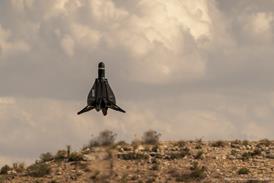The Royal Australian Air Force's 1960s vintage air defence ground environment (ADGE) is to remain in service for another five to seven years because a replacement system to be developed by Boeing Australia is unlikely to be available before 2005.
Boeing was selected to supply a replacement system under project Air 5333 in September 1998. The new ADGE was intended to be available from this year.
The deal was not finalised, however, after Boeing convinced the Australian Department of Defence to link the contract directly to the RAAF's A$3.4 billion ($1.87 billion) Wedgetail airborne early warning and control programme.
Boeing's Wedgetail proposal was selected in June last year but the project was frozen by Australia in August pending re-appraisal as part of a forthcoming Defence white paper. The freeze has put both requirements in a policy and funding limbo. Air 5333 was valued at A$160 million.
The RAAF stressed the need for Air 5333 bidders to offer "a currently fielded air defence system" to ensure the 2000-01 ADGE service entry. If Wedgetail proceeds, the Australian DoD hopes to sign an Air 5333 contract towards the middle of next year.
The present ADGE system was introduced in 1968 and last received a major upgrade in 1981. The system is a mix of computer hardware, using a variety of software languages. The DoD released tenders earlier this month for the establishment of a five-year software support centre for the system, which included an option for a further two years to 2007.
Maintenance, upgrade and study contracts worth A$650,000 have been awarded to support ADGE from February this year. Fourteen of those contracts have been won by Daronmont Technologies, considered by business analysts to be a front-runner for the software support tender.
Other likely bidders include ATI and RLM Systems as well as the Australian subsidiaries of BAE Systems, Boeing, CSC and Thomson Radar.
Source: Flight International























